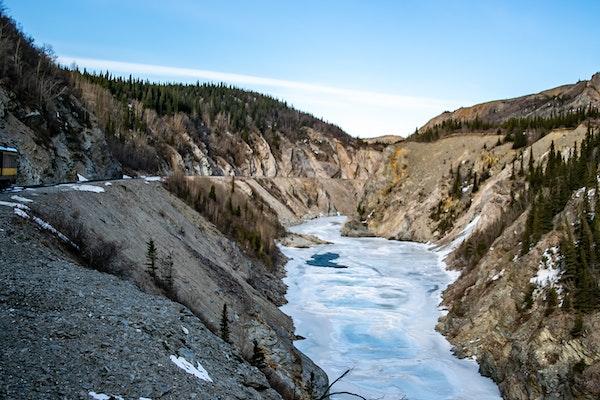Satellite Observations May Explain the Carbon-Water Coupling over Northern Permafrost Regions Better Than Process-Based Models

Recent research has revealed limitations of process-based models in accurately capturing the carbon-water coupling in permafrost regions compared to satellite-based analyses that account for spatiotemporal patterns.
Carbon-water coupling is the interconnection between natural ecosystems' carbon and water cycles. It describes how the processes of carbon uptake (photosynthesis) and water consumption (transpiration) in plants are linked and influence each other. Permafrost regions are areas of land where the ground remains frozen throughout the year due to ground temperature staying below freezing point.
Understanding the coupling of carbon and water in permafrost regions is vital for global carbon and water cycles. The Ecosystem Water Use Efficiency (EWUE) reflects plants' resilience and adaptation strategies to environmental stress, connecting carbon uptake to water consumption at the leaf, plant, and ecosystem levels.
This research focused on permafrost regions in the Northern Hemisphere undergoing significant degradation due to warming, resulting in thawing permafrost. The study area included high-latitude areas such as Siberia, Alaska, and the Canadian Arctic and high-altitude regions like the Tibetan Plateau.
The researchers utilized satellite-based estimates to analyze the spatiotemporal patterns of EWUE quantitatively; they observed that EWUE distribution varied across different regions with distinct environmental conditions and plant communities; however, there was no observed trend from 1982 to 2018. Further analyses, however, identified the positive effects of carbon dioxide (CO2) and nitrogen deposition and the negative impacts of vapor pressure deficit (VPD), temperature, precipitation, and radiation on EWUE.
Researchers also discovered that an ensemble of model estimates overestimated EWUE and exhibited an increasing trend over northern permafrost regions, indicating the limitations of process-based models in accurately capturing the carbon-water coupling. Satellite-based analyses have also revealed positive effects of CO2 on ecosystem-level Water Use Efficiency (WUE).
These discrepancies in EWUE estimates can be attributed to misinterpretations of climatic responses, particularly regarding the effects of CO2 fertilization on Gross Primary Productivity, the measure of the total amount of energy captured by plants during photosynthesis in a specific area or ecosystem.
The study was authored by former Ph.D. student Jian Wang and Professor Desheng Liu in the Department of Geography at The Ohio State University. Liu is also a principal investigator at the Byrd Center. Wang is currently a postdoctoral researcher at the University of Hong Kong, China.
In future research, this study cautions against relying on model-based EWUE when projecting vegetation acclimation and permafrost-climate feedback.
This research was published in Agriculture and Forest Meteorology. Visit the link to read more about this study.
